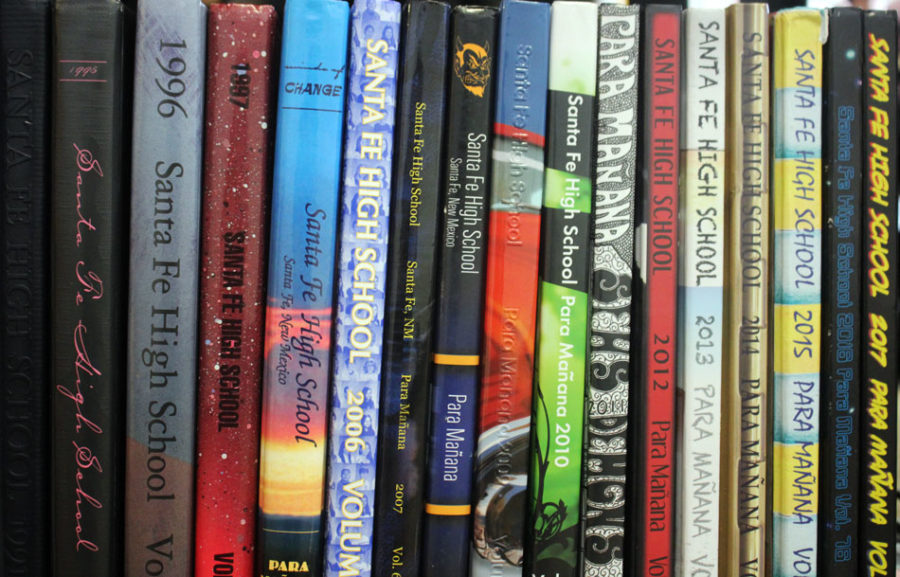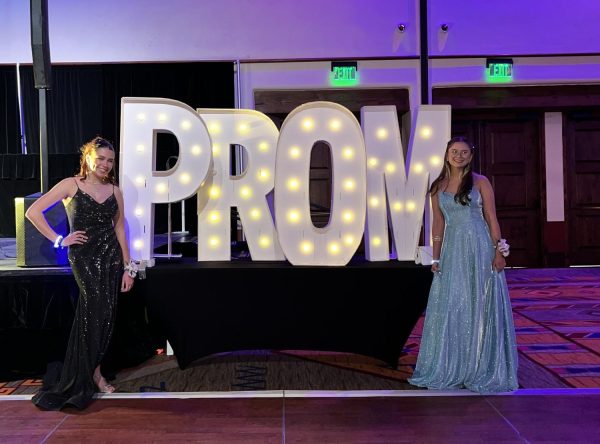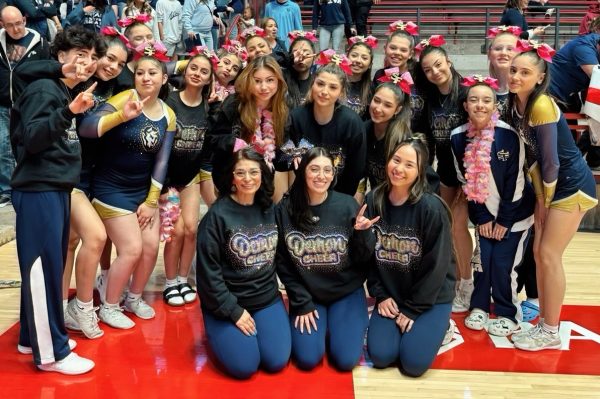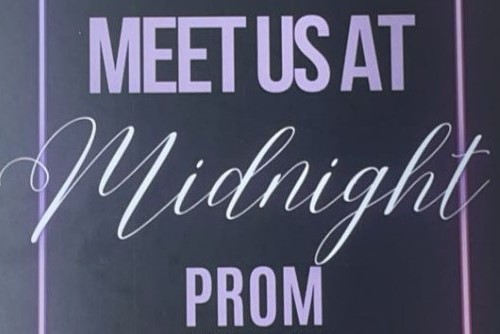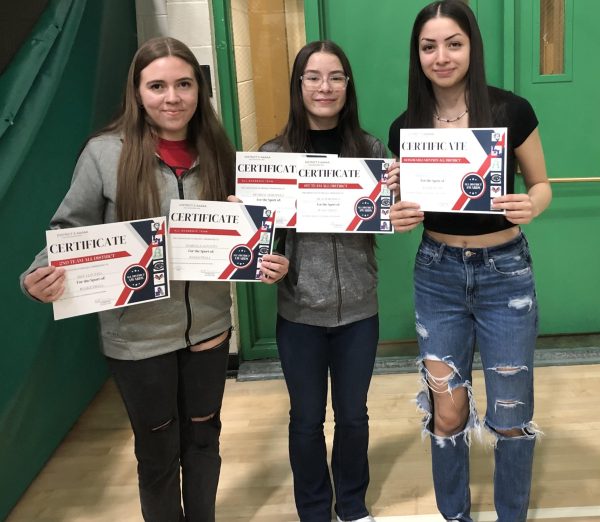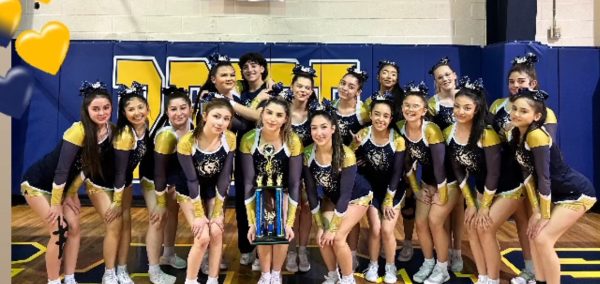Creating the Yearbook: Behind the Scenes at the Stress Factory
April 20, 2018
A message on some of the first pages of Santa Fe High’s 1956 edition of Para Mañana, surrounded by hand-drawn music notes and a familiar depiction of the school’s beloved devilish mascot, reads the words, “I will always remember you.”
And remembered it is, by countless souls who have called Demon Country home, regardless of whether or not they walked its halls in the mid-1950s.
The words “Para Mañana” — for tomorrow — have since created a legacy, a history of life at the school in moments captured on the now thousands of bounded pages found in the dozens upon dozens of treasured editions. This same idea still drives the yearbook’s creators today.
“[The idea of ‘Para Mañana’] is always in the back of my mind when I’m working on the yearbook,” said this year’s editor-in-chief, senior Nina Wickert. “We want to cover the things that people are going to look back on and remember.”
Nina is not alone in her thinking. The staff of Para Mañana’s 1987 edition expressed similar goals on their yearbook’s pages: “What are some of the things you will remember most about high school fifteen years from now? Your favorite teacher? That special boy or girl? Your first car? Your locker?…Life as a student at Santa Fe High School, although difficult and stressful at times, still provides some of the most memorable moments we will share…Someday we can look back, capture the spirit and laugh, or pull out a tissue and dab our eyes at the very special year of 1986-87.”
Regardless of the decade, the four years someone spends at high school — and the memories that come with it — are what Nina hopes students who buy the yearbook will remember and learn from. “I really hope that [the students] take away that even though high school is a very complex time — people are learning and growing up — and there are certain aspects that you probably don’t want to remember … it is four years of your life, and it’s important,” she said. “No matter what you gain from it, you still learn something, and having that book on your bookshelf as that reminder is, I think, a really good thing.”
What most students fail to realize, however, is the amount of work it takes for “that book” to get into their hands. “[When most people] see the yearbook and they open it for the first time, they don’t see that it has taken so much time and effort,” Nina said. “They only see what’s right in front of them.”
According to Nina, who has been on the yearbook staff for three years, the process of finishing the 200-page book is both demanding and time-consuming. This year, it was completed by approximately 45 students in two classes.
The process initially starts the spring before when yearbook teacher Ms. Gerber promotes her strongest students to editor positions. “I like to call them ‘the anointed,’ ” she quipped.
“Then the editors come together and we collectively decide on a theme,” Nina continued, “and we kind of expand from there. … We think about what kinds of features we want to do, and how we’re going to incorporate the theme into the book, and then we start setting up the InDesign pages, organized into a system of working pages, finished pages, editing, and so on. Then we create the ladder, which is basically what will go on each page. It’s really fluid and creatively led… [but] we also have to consider what we didn’t cover enough of last year, what we covered too much of, and kind of adjust how many pages each topic needs.”
“It’s a special task,” Ms. Gerber said. “Producing a yearbook is like assembling a 1,000-piece puzzle with a whole lot of constraints, a bunch of deadlines, and an uneven labor force. It’s a ton of work, and it lasts forever — no pressure or anything.”
Ms. Gerber described the process: She teaches various skills, such as interviewing, design, photography, and journalistic writing. Students pair up into partnerships and are assigned particular topics to report on, such as girls soccer, National Honor Society, or the math department, by certain deadlines. It is the students’ responsibility to gather information, take photos, download those photos, and then design their pages according to specifications.
“It’s not easy,” Ms. Gerber said. “It’s totally unusual for high school, a world apart from ‘Read the chapter and answer the questions.’ This is a real-world task — students have to make something happen.”
Max Minty McGrael, who was on the yearbook staff this year, said, “It’s a lot of hard work, but it’s a lot of fun. It feels more like a job in a sense because you come in and you just have to start working on your spread. At times it can be tedious, making sure the photos are the right size and everything looks good, but the end product is so rewarding.”
Nina described her job as editor-in-chief this year as “a kind of a filter system.”
“Someone will produce a spread, and then it goes to a regular editor. They will edit it and review it to make sure everything’s okay, and then it goes through me to double-check and make sure everything’s truly okay, mostly to ease a lot of Ms. Gerber’s workload and anxiety because she has a lot on her plate.”
The other three editors this year are Daisy Gephart, Olivia Harris, and Hannah Smith, all seniors. “These are incredibly talented and hard-working students,” Ms. Gerber said. “I can’t stress enough how tremendous their work is — we all owe them a debt of gratitude.”
In addition to getting all of this done, Nina stresses the difficulties of getting students, especially in today’s modern world, to buy the publication.
“I’m not going to lie, getting the yearbook to sell is quite a challenge, and it’s really discouraging because we spend an entire year on it,” she said. “What people don’t realize is that the editors and Ms. Gerber, we stay here — especially toward the end of the year when we’re trying to finish the book — we stay here till like 9 o’clock on certain nights, we come in after school and we stay for like five hours. We have pizza and we listen to music, but we’re slaving away working on spreads and trying to get things finished, so it’s really frustrating when not many people buy the yearbook.”
“[But] it is kind of understandable,” she continued. “Now that there’s social media, and the internet, some people feel like they don’t need to have the yearbook. We just try to remind people that print is the most solid thing. Technology could collapse at any second, and if you want your memories to be 100 percent solid, you need to have them in print form. … It’s also kind of like a traditional thing — when you have kids, when you’re older, you’ll want to go back and show people. Who knows what technology is going to be like in 50 years? You want to be able to look back.”
For 2018, “looking back” means reflecting on “the game of high school,” this year’s theme.
“This year’s theme is games,” said Nina, “so any type of game — video games, board games, T.V. show games, stuff like that. … There wasn’t really a significant reason we chose it, we just thought it would be a nice idea to have something fun. … It’s a really exciting yearbook. We have a really, really, good group of editors and we incorporated the theme a lot. … Our tagline is ‘win the game of high school,’ and on one of the pages, we actually have a board game that we made. It’s the game of high school that you can play with someone else. We worked really hard on that.”
The book can be purchased for $40 cash in Ms. Gerber’s room (BC-104) or online for $42. Nina encourages more students and faculty to invest in it. “I think the yearbook, as a whole, is kind of a buried treasure,” she said. “No one appreciates it enough in my opinion, [but] I just think it’s a wonderful thing. That’s why I’ve been [creating it] for three years.”
“It’s really rewarding,” she continued. “I’ve participated in may things throughout my high school career, but yearbook, to me, has always been the biggest thing. It’s strange to say it, but it’s almost like I’m experiencing all these different clubs and activities and sports vicariously through others and their pictures, and just getting this sense of community, the kind of community that Santa Fe High School wants to have.” She believes that people who buy the yearbook will experience this as well.
And this reward is timeless, whether it be experienced today or saved “for tomorrow,” as proven in the sentiments expressed by the 1973 Para Mañana team when talking about the making of their yearbook, or what they called an annual: “An annual is a year…a year in time and a year in memories. An annual tries to show where we are now, in hopes it will inspire a wish to go further…Each year says: Go Somewhere! Do Something! Be Somebody! Annual staff tried in the year 1972-73 and found the joy of doing! We hope you did, too.”


